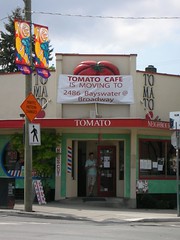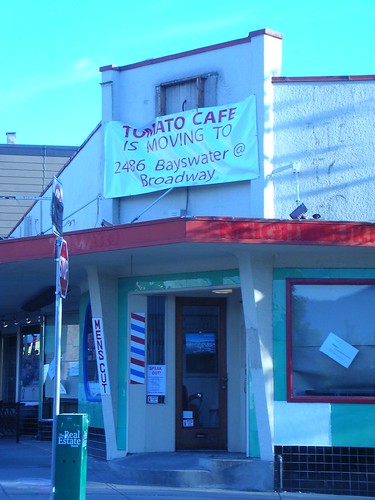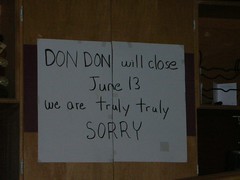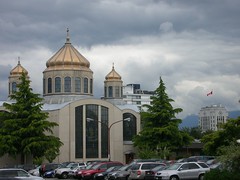24 Hrs has produced a video podcast about Cambie St construction. If you haven't experienced the chaos first-hand, it's an amusing introduction.
Saturday, June 30, 2007
Thursday, June 14, 2007
Accessibility and Urban Form, Part II
A business located at 17th and Cambie such as Jack hair salon will be an 8-block walk from either station. Neil Barkey, the owner of Jack, was doubtful that his business will ever feel much positive impact from the Canada Line. He predicted that the end of construction would see many Cambie Village businesses struggling to recover from debts incurred during this downturn.
An underground rapid transit line is quite different from a streetcar or trolley bus line in the way it brings people to a neighbourhood. Passengers on a trolley bus can disembark at any block, and can view destinations along the route as they travel. On the other hand, an underground railway provides increased accessibility to specific nodes where stations are located.
Neil Barkey hopes that the saving grace for his business will be the estimated 40% of his client base who are local residents. They are regular customers who know their way around today's changing construction, and who will likely remain loyal to their favourite neighbourhood businesses in the future.
Accessibility and Urban Form, Part I
Since the CPR's first passenger train arrived in the new city of Vancouver in 1887, transportation projects both grand and mundane have shaped this city. Logically enough, land value tends to increase as real estate becomes more accessible. When electric streetcar lines radiated out from Vancouver's central city into suburbs like Mount Pleasant and Point Grey, densification of land use along the lines followed, forming "commercial ribbons". Walter Hardwick's 1974 book "Vancouver" shows a photo from 1909 of the 4th Avenue streetcar's first run through Point Grey. Streetcar tracks run down a rough road cut through the trees. The only other visible signs of development are overhead wires and streetlights. What are now Vancouver's central neighbourhoods were initially opened up to development by streetcars.*
Here we go again in the 21st century. As the Canada line improves accessibility between downtown Vancouver, central Richmond and the airport, the built landscape as well as the character of neighbourhoods will be affected along the line. One result is bound to be overall increased density. So far construction has reduced access to areas like the Cambie Village on a temporary basis while land values may already be undergoing anticipatory inflation based on future accessibility.
*If you've ever wondered, the little jog in the commercial strip where Broadway meets Alma St. exists because two streetcar lines (Broadway and 4th Ave) once met there before the tracks followed 10th avenue further west.
Tuesday, June 12, 2007
Online RAV Line Resources
It's interesting to compare the differences in perspective between the more offical sites such as the official Canada Line website and the community groups and blogs.
If I've missed any essential links, please let me know.
Saturday, June 2, 2007
Goodbye Tomato
I had been wondering if the Tomato Cafe's big tomato sign would remain presiding over its corner after the restaurant moved on. Today I walked by and saw that the giant tomato had indeed come down. The building looks totally different without it. A banner informs that a new restaurant will soon try its luck there.
As you can see from the sidewalk art, the tomato will be missed.
The corner of 17th and Cambie looks quite different without the tomato sign:
Before:
After:







